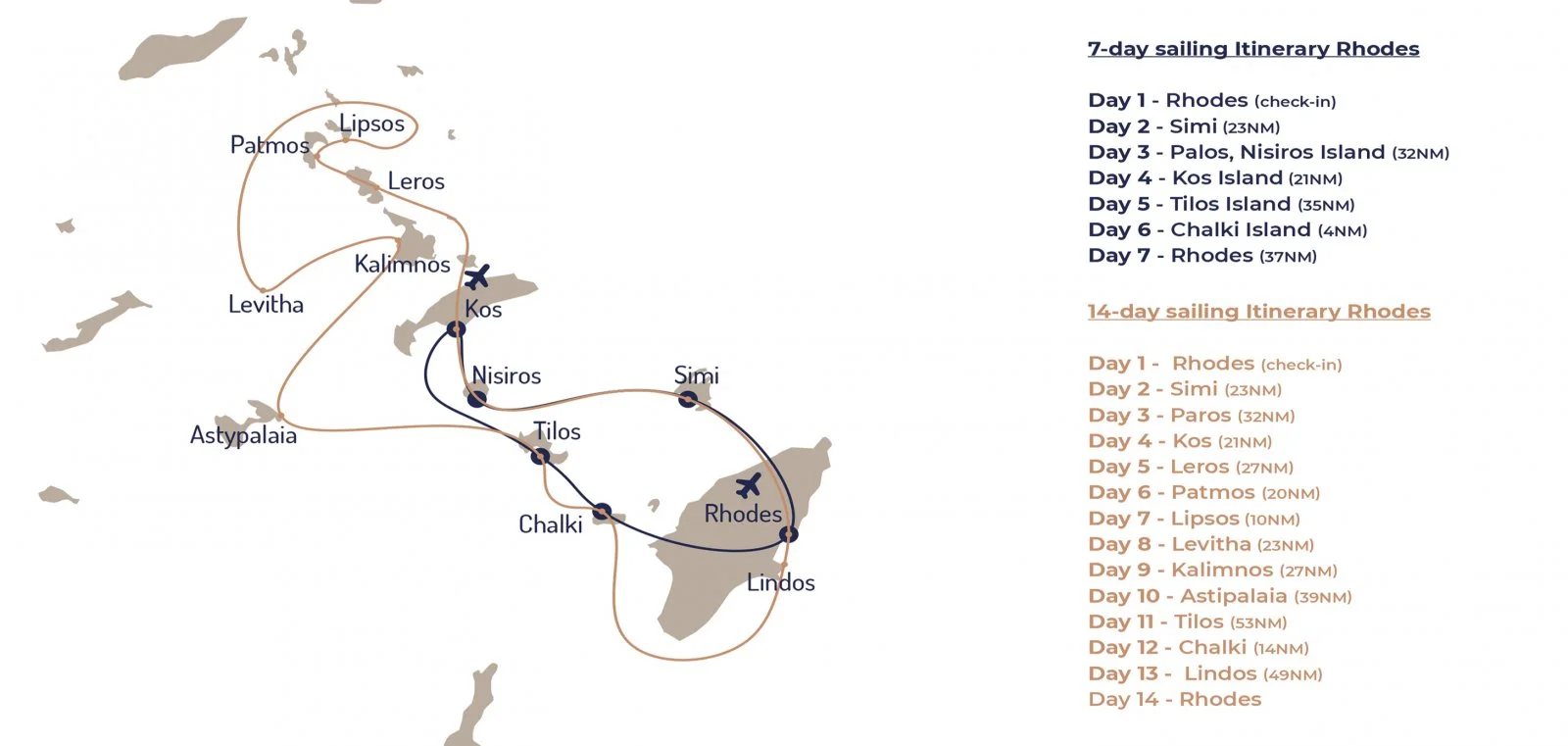A complete yacht charter guide that has everything you need to know about sailing holidays in Rhodes.
If you love the idea of having your next sailing holidays in Greece, and especially the island of Rhodes (or Rhodos), this is what you need to get prepared before your boat trip.
Ready to rent a boat? Check our boat rentals in Rhodes
Let's dive right in!
Rhodes, possibly the most famous of the Dodecanese islands, was once home to one of the Seven Wonders of the Ancient World - the Colossus of Rhodes – until an earthquake in 226 BC destroyed this artefact.
Despite that, Rhodes, as well as the surrounding Dodecanese islands, are full of history and stunning archaeological landmarks, as well as Byzantine and medieval monuments.
This region is also often referred to as "the sunniest corner in Greece" and the excellent sailing conditions and long passages between the islands make a yacht charter in Rhodes ideal for keen sailors and adventure seekers.
To sail the Southeastern Aegean, you can either start from Kos or Rhodes.
While Kos offers charterers the chance to explore the lesser-known, and quieter areas of the Dodecanese, a Rhodes Sailing Itinerary features the larger, main islands.
Rhodes is ideal for:
Want to visit Turkey, too?
Check our listings for boat rentals in Turkey's Agean!
During summer, you can expect a dry, hot Mediterranean climate, with temperatures averaging 25 - 35 degrees Celsius.
The prevailing wind is usually from the North - Force 5 to 7, which is why we recommend this sailing region for more advanced sailors.
You will need to fly in and out of the International airport of Rhodes, which has daily flights arriving from all over Europe. Several low-cost airlines fly to Rhodes from the UK as well.
We can, of course, organise and book your airport transfers for you in advance, and the transfer time from Rhodes airport to Rhodes marina is approximately 30 minutes.
If you want to combine your yacht charter in Rhodes with a visit to Turkey beforehand, you can also take the daily ferry from Marmaris or Gocek.
Liked what you read about Rhodes so far?
Check also our Kos sailing guide!

⚓ Day 1. Rhodes (check-in)
⚓ Day 2. Simi (23nm)
⚓ Day 3. Palos, Nisiros Island (32nm)
⚓ Day 4. Kos Island (21nm)
⚓ Day 5. Tilos Island (35nm)
⚓ Day 6. Chalki Island (4nm)
⚓ Day 7. Rhodes (37nm)
⚓ Day 1. Rhodes (check-in)
⚓ Day 2. Simi (23nm)
⚓ Day 3. Palos (32nm)
⚓ Day 4. Kos (21nm)
⚓ Day 5. Leros (27nm)
⚓ Day 6. Patmos (20nm)
⚓ Day 7. Lipsos (10nm)
⚓ Day 8. Levitha (23nm)
⚓ Day 9. Kalimnos (27nm)
⚓ Day 10. Astipalaia (39nm)
⚓ Day 11. Tilos (53nm)
⚓ Day 12. Halki (14nm)
⚓ Day 13. Lindos (49nm)
⚓ Day 14. Rhodes
Keep on reading: First time sailing Guide [11 Must-Have Tips for Beginners]
Sailing holidays in Corfu
Sailing holidays in Lefkas
Sailing holidays in Kos
Sailing holidays in Saronic Islands around Athens
Sailing holidays in Sporades